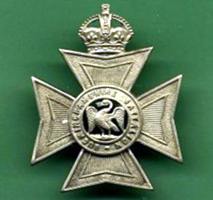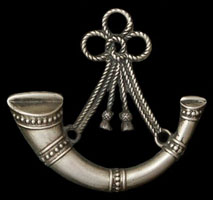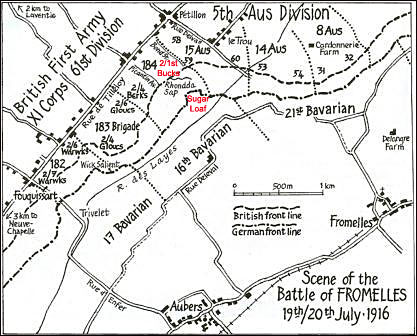 |
 |
 |


Memories of World War 1 - Oxford and Bucks Light Infantry 2/lst Bucks Battalion. |
|
During World War 1 numerous men from around the Wolverton Area enlisted to fight, a great number of them entered the Oxford and Bucks Light Infantry.
This is a small record of their time with thanks to the Museum at Slade Park Barracks, Headington, Oxford. The Bucks Reserve Battalion, afterwards designated the 2/1 Bucks Battalion (commonly known as the 2nd Bucks) was raised at Aylesbury by Lt.-Col. H. M. Williams T.D. and received official recognition on the 26th September 1914. Lt.-Col Williams looked for an officer in the Regular Army and if possible, a resident in the County, for the appointment of Adjutant, he obtained the services of Capt. R. W. Harling, late of the Connaught Rangers who resided at Little Hampden In December, the Band of the 1st Battalion joined, under Sgt. Brooks from Wolverton. By the end of December the clothing and equipment of the Battalion was complete, and, as a considerable number of D.P.Rifles had been obtained on loan from the Eton O.T.C. the turnout in Aylesbury was considered very favourably with the appearance of other Battalions of the |Army. On the 1st February, the 2nd Bucks moved to Northampton and joined the South Midland Reserve Brigade afterwards called the 184th Infantry Brigade under the command of Col. Walter Ludlow, C.B. The other Battalions being the 2/4th Royal Berks Regiment, the 2/4th Oxford and Bucks Light Infantry and the 2/5th Gloucester Regiment. The Battalion was armed with Japanese rifles, with 100 S.M.L.E. Rifles for training purposes and provided with transport animals, horses and mules, many of them recent arrivals from the Argentine, U.S.A. and Canada. Early in April 1915, the Division moved to Chelmsford where it formed part of the Third Army under General Alfred Codrington and took an active part in Home Defence. On 25th May 1916, the Battalion left Parkhouse Camp and entrained for Southampton where it embarked for Havre and on arrival entrained for the front, they detrained at Berguette and marched to billets at Le Sart near Merville. Here they remained for about ten days before they and the 2/4th Royal Berks were ordered up to Laventie to take the place of the 2/5th Gloucester's and the 2/4th Oxfords On the 15th July they marched to Laventie or more generally Fromelle, where preparations were made for an attack that eventually took place on l9th July, after being postponed from the 17th. The object in view by the Division was to render assistance to the operations on the Somme by preventing the withdrawal of German troops from this sector as reinforcements.
The Division was closed up on less than a Brigade frontage from opposite the Wick to Sugar Loaf salients, two battalions from each Brigade were detailed for this attack, the remaining two being in support . The preliminary bombardment lasted about three days and was carried out by some 350 guns of all calibres. On the 18th A Company lost 78 men owing to a short shell from our own guns falling on a gas cylinder and bursting it in the trench. On the 19th, owing to the restricted front and consequent crowding in the trenches, the casualties were very heavy amounting to nearly 100 killed and wounded. At 6pm four waves leaped up and assaulted the enemy's trenches, not a man was seen to waver, but the fire brought to bear was annihilating. Even before 5.40pm the enemy machine guns were busy and at 6pm they literally mowed down the advancing waves, only a few men reached the German parapet, but some were seen actually on the parapet, and may have got in, but none came back. By 6.30 pm it was evident the attack had failed. All the officers of the three companies that had gone out were either killed or wounded except one. Incidentally, the enemy incurred heavy casualties though not nearly as heavy as was calculated during the progress of the bombardment. Their line was lightly held by infantry. Great reliance was placed on their numerous and well placed machine Gun Teams, their bomb proof shelters were efficient and they persistently declined to be misled by the appearance of an imminent attack stage managed for their benefit. The casualties of the Battalion, which had gone into action with 20 officers And 622 other ranks, were 322 of all ranks during the 18th and 19th July. Killed 4 officers, 62 other ranks, died of wounds 1 officer, wounded 8 officers and 180 other ranks, missing believed killed 2 officers and 65 other ranks. Medals awarded Military Cross 4, Distinguished Conduct Medal 2, and Military Medal 5. At 1am on the 20th the Battalion on relief by the 2/4th Oxfords, withdrew to its billets near Laventie, and at 10am, was conveyed by motor bus to Estaires. After the action above, the Division called themselves, self-mockingly the "sixty worst Division". Apparently, Adolf Hitler was serving with the 16th Bavarians opposite the 2/1st Bucks at the time of this action. Some of the above information was given to me by my Grandfather John Charles Mayes Emery of the 2/1st Bucks Battalion who enlisted on 8th November 1915 and served in "B" company; he was discharged on the 3rd December 1917 due to wounds received during the attack, and by his son, my father, William Ronald (Ron) who served in the Royal Marines in World War Two. R.P. Emery |
|
|
||
|
|
||
|
|
